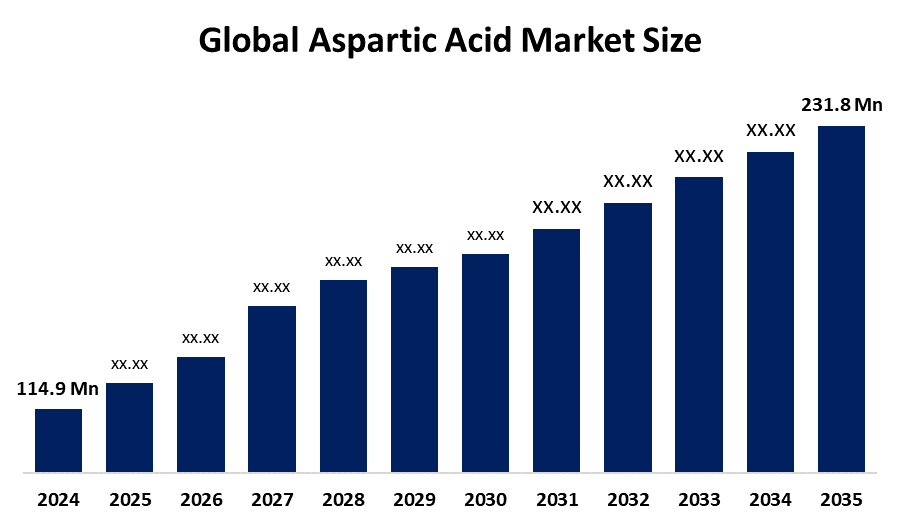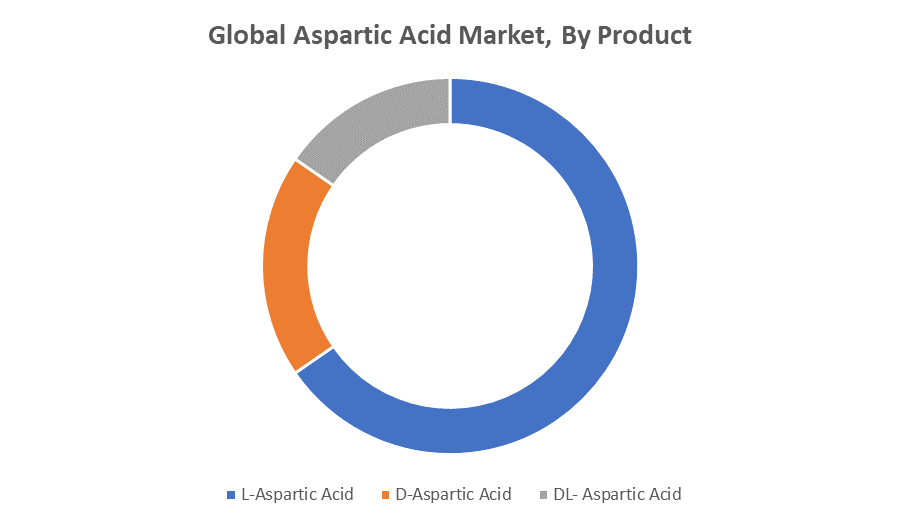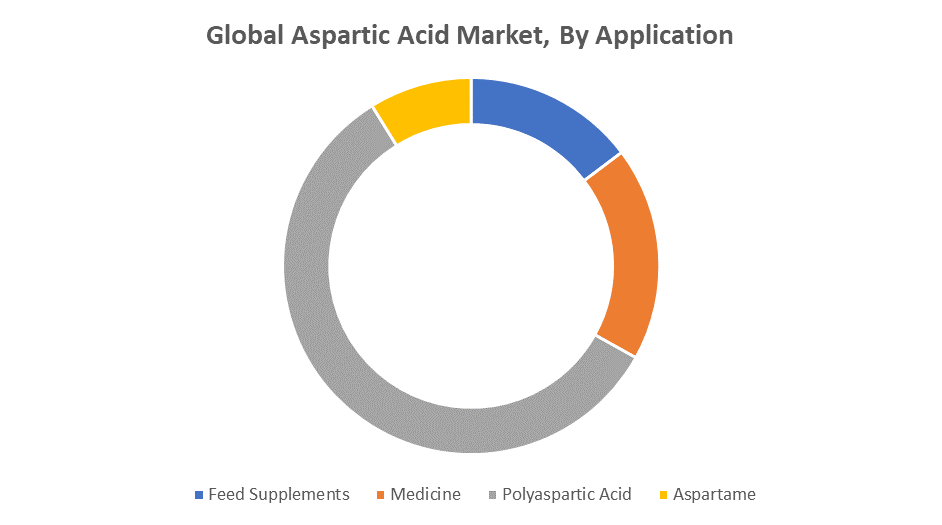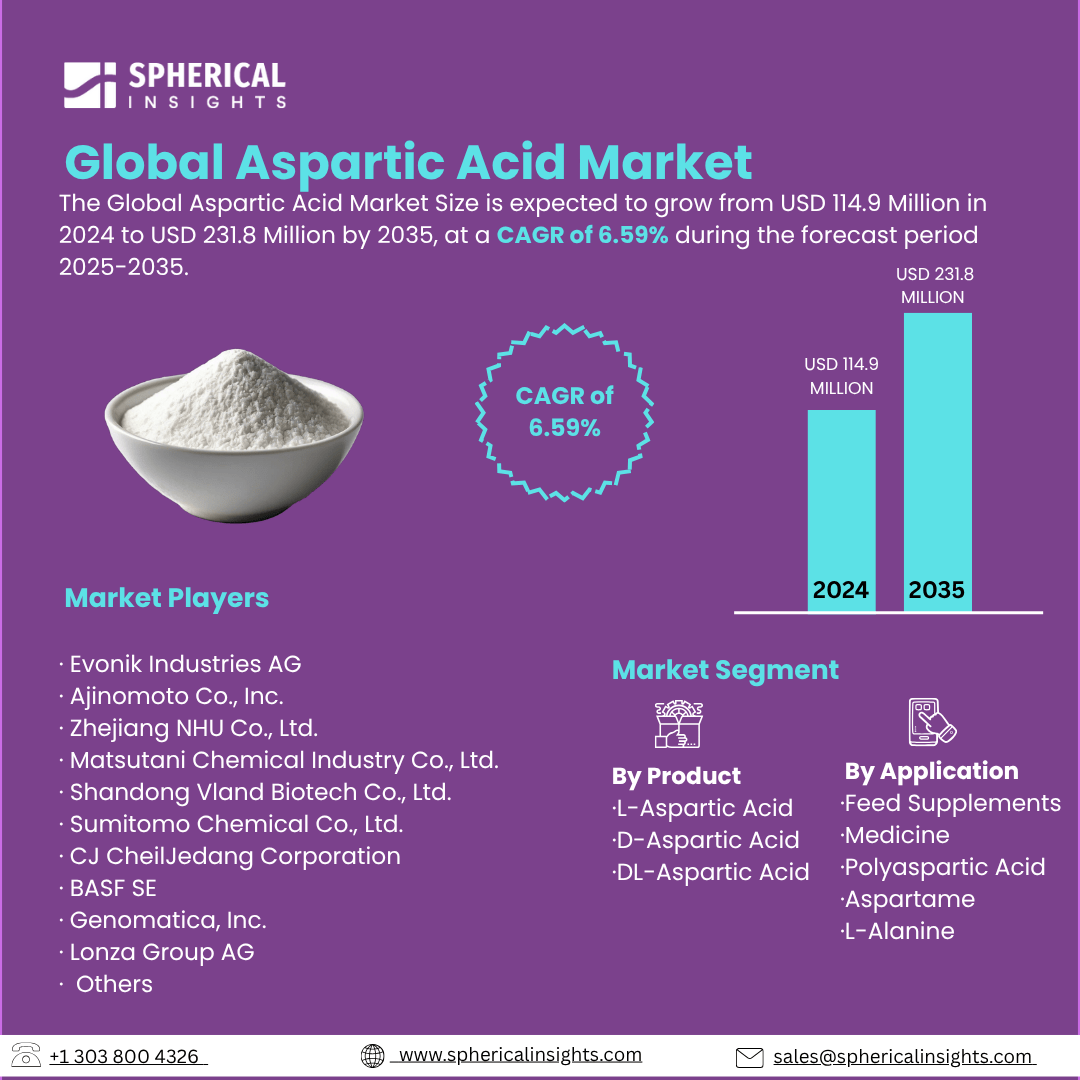Global Aspartic Acid Market Insights Forecasts to 2035
- The Global Aspartic Acid Market Size Was Estimated at USD 114.9 Million in 2024
- The Market Size is Expected to Grow at a CAGR of around 6.59% from 2025 to 2035
- The Worldwide Aspartic Acid Market Size is Expected to Reach USD 231.8 Million by 2035
- Asia Pacific is expected to grow the fastest during the forecast period.

Aspartic Acid Market
Aspartic acid is a non-essential amino acid that occurs naturally in both plant and animal proteins. It plays a key role in protein synthesis and is commonly used in various industrial and commercial applications. In the global market, aspartic acid is utilized in the production of artificial sweeteners, nutritional supplements, and pharmaceutical products. It is also used in the manufacture of biodegradable polymers and certain detergents due to its chemical properties. The market includes both natural and synthetic sources of aspartic acid, with production methods ranging from enzymatic conversion to chemical synthesis. It serves as a crucial ingredient in several formulations across food, healthcare, and chemical industries. The market is composed of manufacturers, suppliers, and end-use industries that rely on aspartic acid for its functional benefits. As a versatile compound with a stable demand base, aspartic acid continues to maintain its importance in various industrial processes and consumer applications worldwide.
Attractive Opportunities in the Aspartic Acid Market
- Aspartic acid’s chemical properties enable its use in innovative, eco-friendly polymers like bio-based coatings and smart packaging. These sustainable alternatives to traditional plastics are gaining traction, driven by environmental regulations and consumer demand for green products.
- Aspartic acid can be a key component in custom-designed metabolic pathways within synthetic biology, enabling the production of high-value compounds. This opens new frontiers for biotech firms developing specialized enzymes and novel bio-products.
- With the rising popularity of plant-based diets, aspartic acid presents opportunities as a fortified ingredient in vegan supplements and functional foods, catering to health-conscious consumers seeking natural, bioavailable amino acids.
Global Aspartic Acid Market Dynamics
DRIVER: Increasing use of aspartic acid in the production of artificial sweeteners
The global aspartic acid market is driven by several key factors that contribute to its growing demand across various industries. One major driver is the increasing use of aspartic acid in the production of artificial sweeteners like aspartame, which are widely used in low-calorie and diet food products. Rising health awareness and demand for dietary supplements also fuel the market, as aspartic acid plays a role in improving metabolism and energy levels. Additionally, its application in biodegradable polymers supports the shift toward sustainable and eco-friendly products in agriculture, packaging, and water treatment. The pharmaceutical industry further boosts demand due to aspartic acid’s role in drug formulation and treatment of certain medical conditions. Technological advancements in biotechnology have improved production efficiency, reducing costs and increasing supply. Growth in end-user industries such as food, healthcare, and personal care also contributes to market expansion, making aspartic acid an essential component in diverse global markets.
RESTRAINT: High production cost associated with both natural extraction and synthetic processes
One of the primary challenges is the high production cost associated with both natural extraction and synthetic processes, which can affect overall profitability and market competitiveness. Additionally, the availability of alternative amino acids and synthetic substitutes with similar functions can reduce demand for aspartic acid in certain applications. Regulatory challenges related to food-grade and pharmaceutical-grade standards also pose barriers, especially in regions with strict compliance requirements. Market fluctuations in raw material availability and price volatility further impact consistent production. Limited consumer awareness in developing regions and a lack of advanced manufacturing infrastructure can slow market penetration. Moreover, environmental concerns related to some chemical synthesis processes may discourage large-scale industrial adoption. These factors, combined with competition from established ingredients in related sectors, present challenges to the steady growth of the aspartic acid market globally.
OPPORTUNITY: Integration into next-generation biodegradable materials
The global aspartic acid market holds unique opportunities that extend beyond its traditional uses. One emerging avenue is its integration into next-generation biodegradable materials, particularly in high-performance bio-based coatings and smart packaging solutions, where environmental sustainability is a top priority. Aspartic acid’s chemical structure allows for innovative polymer formulations that could replace conventional plastics in niche industrial applications. Another distinct opportunity lies in its potential role in the field of synthetic biology, where it can be utilized in custom-designed metabolic pathways for producing high-value compounds. In pharmaceuticals, ongoing research into amino acid therapy highlights aspartic acid’s possible benefits in cognitive health and neurodegenerative disease treatment. Moreover, the rising popularity of plant-based nutrition creates space for aspartic acid in fortified vegan supplements and functional foods. Collaborations between biotech firms and academic institutions may lead to breakthroughs in enzyme customization using aspartic acid as a core component, unlocking further application potential in untapped markets.
CHALLENGES: Complexity of large-scale production while maintaining consistent purity and quality
One significant challenge is the complexity of large-scale production while maintaining consistent purity and quality, especially for pharmaceutical and food-grade applications. Variability in fermentation or synthesis processes can impact product uniformity, leading to increased costs in quality control and compliance. Additionally, supply chain disruptions, particularly for specialized enzymes and feedstock used in biosynthesis, can hinder manufacturing continuity. Intellectual property barriers and limited access to advanced technologies in developing regions also challenge the market's expansion and innovation. Moreover, integrating aspartic acid into new product formulations requires significant R&D investment and time, which smaller manufacturers may find difficult to sustain. Market consolidation among a few key players can limit competitiveness and discourage new entrants. Lastly, educating end-users about the distinct benefits of aspartic acid over substitutes remains a challenge, especially in industries unfamiliar with its full potential and versatility.
Global Aspartic Acid Market Ecosystem Analysis
The global aspartic acid market ecosystem comprises raw material suppliers, manufacturers, technology providers, research institutions, and regulatory bodies. Production involves microbial fermentation or chemical synthesis, supported by innovations from biotech firms and academia. Distributors connect producers with end-use industries like food, pharmaceuticals, agriculture, and biodegradable polymers. Regulatory agencies ensure safety and compliance, while market intelligence platforms aid strategic decisions. The ecosystem is dynamic, driven by sustainability trends, technological advancements, and increasing demand for functional, eco-friendly ingredients across diverse applications.
Based on the product, the L-aspartic acid segment dominated the market and accounted for a share over the forecast period

L-aspartic acid, the naturally occurring isomer, is widely used in pharmaceuticals, food additives, and dietary supplements due to its high bioavailability and essential role in protein synthesis and metabolic functions. Its broad range of applications, especially in health and wellness products, along with increasing consumer preference for naturally derived ingredients, has significantly contributed to its market leadership.
Based on the application, the polyaspartic acid segment accounted for the largest market revenue share during the forecast period

Polyaspartic acid, a biodegradable polymer derived from aspartic acid, is widely used in coatings, agriculture, water treatment, and construction due to its eco-friendly properties and versatility. Its growing adoption as a sustainable alternative to traditional polymers has driven strong demand, contributing significantly to market revenue. Increasing environmental regulations and a shift towards green products further support the expansion of the polyaspartic acid segment globally.
North America is anticipated to hold the largest market share of the aspartic acid market during the forecast period
North America is anticipated to hold the largest market share in the global aspartic acid market during the forecast period. This is attributed to the region's well-established pharmaceutical and food industries, high consumer awareness regarding health and wellness, and strong adoption of advanced biotechnological production methods. Additionally, stringent environmental regulations encourage the use of biodegradable products like polyaspartic acid, further boosting market demand. The presence of key manufacturers and ongoing research initiatives in North America also contribute to its leading position in the aspartic acid market.
Asia Pacific is expected to grow at the fastest CAGR in the aspartic acid market during the forecast period
Asia Pacific is expected to grow at the fastest CAGR in the aspartic acid market during the forecast period. Rapid industrialization, expanding pharmaceutical and food processing sectors, and increasing health awareness among consumers are driving demand in this region. Additionally, growing investments in biotechnology and manufacturing infrastructure, along with rising disposable incomes, contribute to market growth. The region's large population and expanding urbanization further fuel consumption of products containing aspartic acid. Emerging economies like China and India are key contributors, making Asia Pacific a high-potential market for aspartic acid.
Recent Development
- In March 2024, Evonik and Shandong Vland Biotech launched a joint venture in China to focus on animal gut health products. The venture aims to leverage Evonik's expertise in probiotics and Vland's market presence to develop new solutions for the Greater China region and beyond.
Key Market Players
KEY PLAYERS IN THE ASPARTIC ACID MARKET INCLUDE
- Evonik Industries AG
- Ajinomoto Co., Inc.
- Zhejiang NHU Co., Ltd.
- Matsutani Chemical Industry Co., Ltd.
- Shandong Vland Biotech Co., Ltd.
- Sumitomo Chemical Co., Ltd.
- CJ CheilJedang Corporation
- BASF SE
- Genomatica, Inc.
- Lonza Group AG
- Others
Market Segment
This study forecasts revenue at global, regional, and country levels from 2020 to 2035. Spherical Insights has segmented the aspartic acid market based on the below-mentioned segments:
Global Aspartic Acid Market, By Product
- L-Aspartic Acid
- D-Aspartic Acid
- DL-Aspartic Acid
Global Aspartic Acid Market, By Application
- Feed Supplements
- Medicine
- Polyaspartic Acid
- Aspartame
- L-Alanine
Global Aspartic Acid Market, By Regional Analysis
- North America
- Europe
- Germany
- UK
- France
- Italy
- Spain
- Russia
- Rest of Europe
- Asia Pacific
- China
- Japan
- India
- South Korea
- Australia
- Rest of Asia Pacific
- South America
- Brazil
- Argentina
- Rest of South America
- Middle East & Africa
- UAE
- Saudi Arabia
- Qatar
- South Africa
- Rest of the Middle East & Africa






